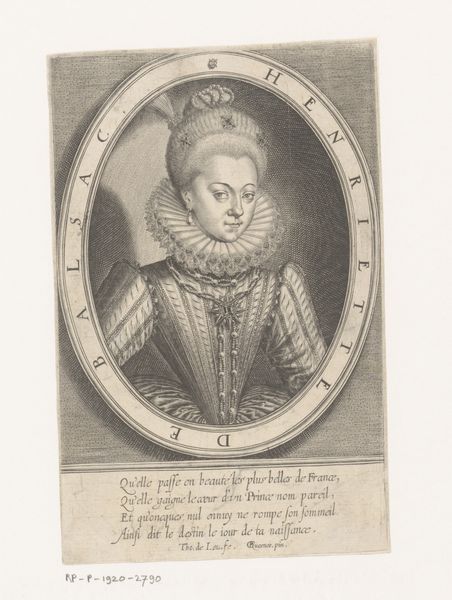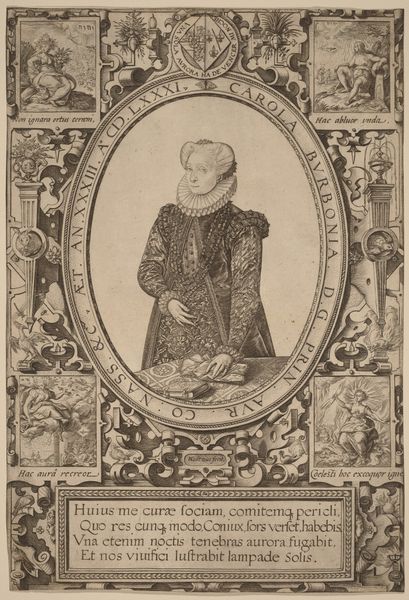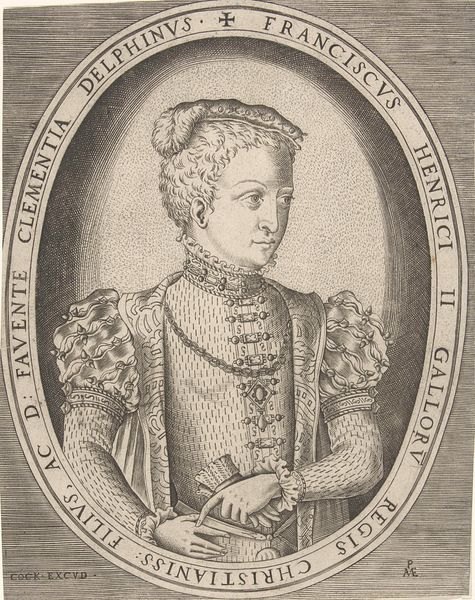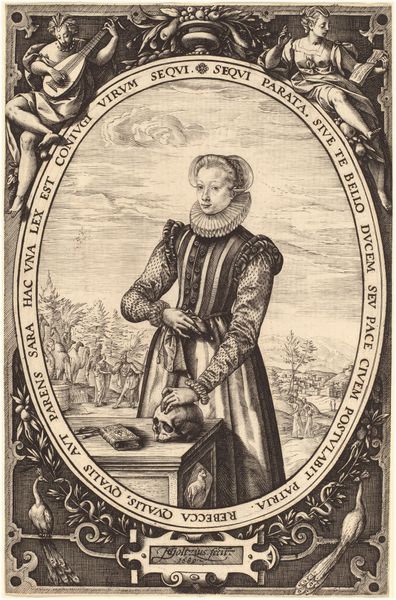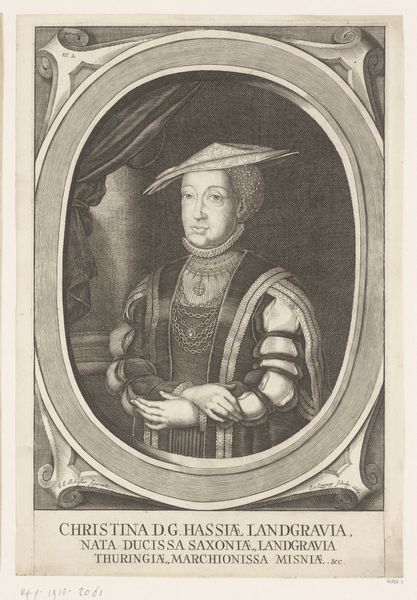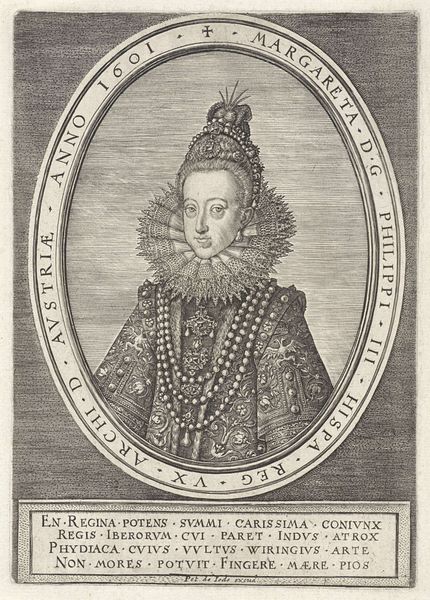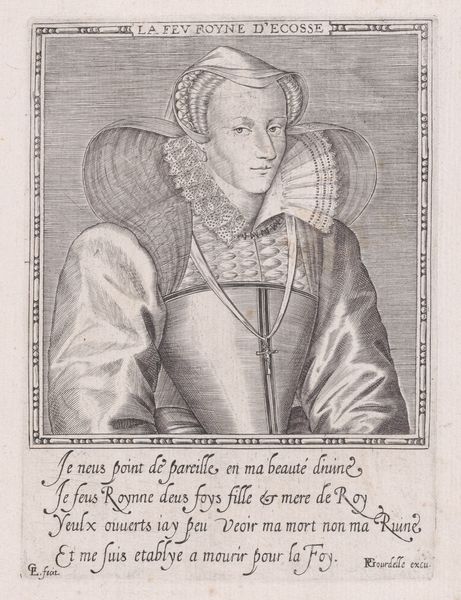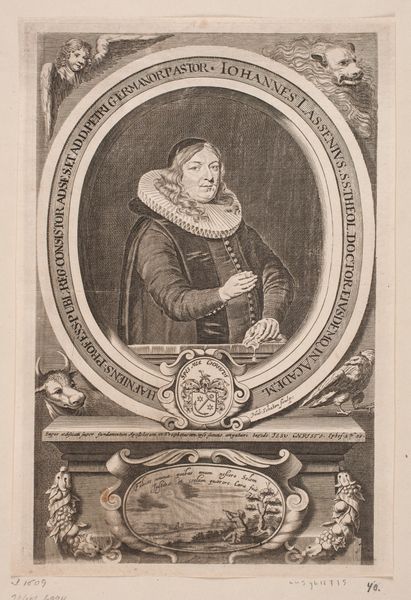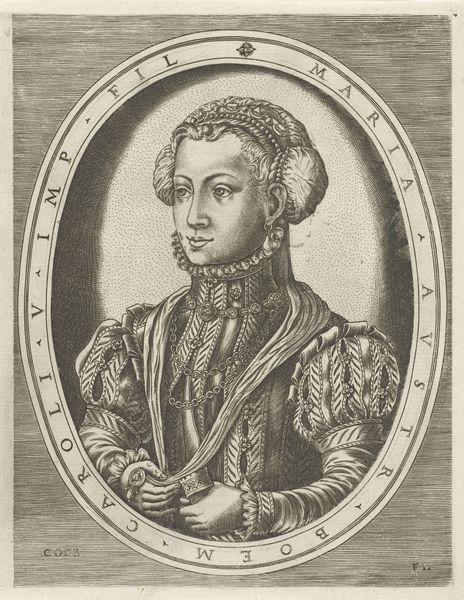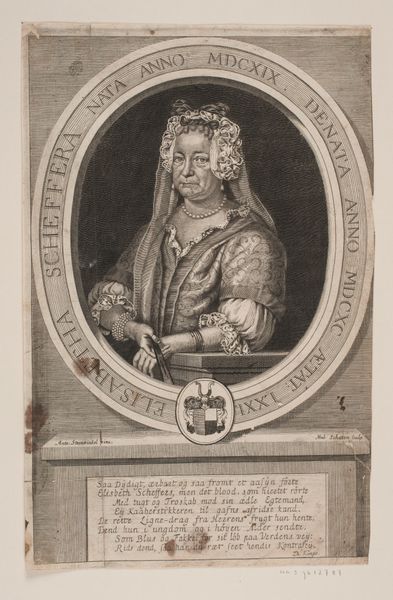
print, engraving
#
portrait
# print
#
mannerism
#
vanitas
#
pencil drawing
#
history-painting
#
engraving
Copyright: National Gallery of Art: CC0 1.0
Hendrick Goltzius made this engraving of Françoise van Egmond in the Netherlands, sometime in the late 16th century. Here we see how the visual codes of portraiture served the interests of class and nobility. Consider how the image creates meaning through visual codes, cultural references and historical associations. This image is a study in power, as the trappings of nobility, such as the elaborate dress, jewelry and hairstyle indicate Van Egmond's place in society. It is a self-consciously conservative work made to cement a sitter’s position within the existing hierarchy. The skull in the foreground is a memento mori, a reminder of the sitter’s mortality that also alludes to her Christian piety. Understanding the institutional and social context of such an image requires archival research into the conventions of Northern Renaissance portraiture, as well as the history of Dutch nobility. The meaning of art is always contingent on social and institutional context.
Comments
No comments
Be the first to comment and join the conversation on the ultimate creative platform.

